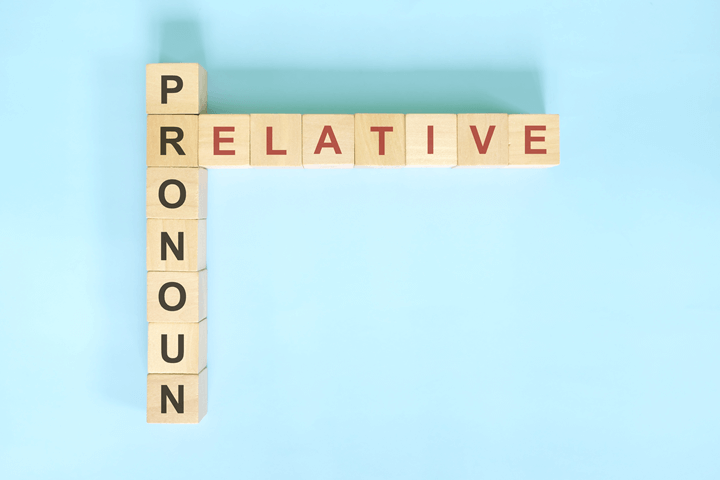Mastering relative pronouns in arabic is essential for building complex, flowing sentences. These pronouns act as the “glue” that connects a descriptive clause (a phrase that gives extra detail) back to a specific person or thing (relative pronouns arabic).
Therefore, this guide will break down the essential relative pronouns in arabic in Modern Standard Arabic (MSA), their different forms, and how they simplify in spoken dialects.
Common Relative Pronouns in Arabic (MSA)
In Arabic, the relative pronouns in arabic (اَلْاِسْم الْمَوْصُول – al-ism al-mawṣūl) must agree with the noun they refer to in gender and number. Specifically, they fall into two main categories: specific (which change form) and common (which stay the same).
Specific Relative Pronouns (The Changing Forms)
First and foremost, these pronouns are essential. They change form based on the noun’s gender, number, and grammatical case (the Dual forms change endings).
| Form (Agreement) | Arabic Pronoun | Transliteration | Case Usage | Example Sentence |
|---|---|---|---|---|
| Masculine Singular | الَّذِي | al-ladhī | Invariable | الرَّجُلُ الَّذِي يَكْتُبُ. (The man who is writing.) |
| Feminine Singular | الَّتِي | al-latī | Invariable | المَرْأَةُ الَّتِي سَافَرَتْ. (The woman who traveled.) |
| Masculine Dual | الَّذَانِ / الَّذَيْنِ | al-ladhānī / al-ladhaynī | الَّذَانِ (Nominative) / الَّذَيْنِ (Accusative/Genitive) | الطَّالِبَانِ الَّذَانِ دَرَسَا. (The two students who studied.) |
| Feminine Dual | اللتَانِ / اللَّتَيْنِ | al-latānī / al-lataynī | اللَّتَانِ (Nominative) / اللَّتَيْنِ (Accusative/Genitive) | السَّيَّارَتَانِ اللتَانِ وَصَلَتَا. (The two cars that arrived.) |
| Masculine Plural | الَّذِينَ | al-ladhīna | Invariable | المُهَنْدِسُونَ الَّذِينَ يَعْمَلُونَ. (The engineers who work.) |
| Feminine Plural | الَّلاتِي / اللَّواتِي | al-lātī / al-lawātī | Invariable | النِّسَاءُ الَّلاتِي فَزْنَ. (The women who won.) |
Common Relative Pronouns (The Invariable Forms)
In contrast, these pronouns do not change their form based on gender, number, or case. Thus, they are much easier to use.
| Pronoun | Usage | Transliteration | Example Sentence | English Meaning |
|---|---|---|---|---|
| مَنْ | For People (Who/Whoever) | man | أَحْتَرِمُ مَنْ يَقُولُ الْحَقَّ | I respect whoever speaks the truth. |
| مَنْ سَاعَدَنِي فَهُوَ صَدِيقِي | The one who helped me is my friend. | |||
| مَا | For Things/Concepts (What/That which) | mā | قَرَأْتُ مَا فِي الْكِتَابِ | I read what is in the book. |
| لَا أَعْرِفُ مَا يُفَكِّرُ فِيهِ | I don’t know what he is thinking about. |
Usage and Examples of Relative Pronouns in Arabic Sentences
The Arabic Relative Pronouns Function primarily as connectors. Therefore, the phrase that follows the pronoun is called the relative clause (جُمْلَةُ الصِّلَة – jumlat aṣ-ṣilah).
The Essential Rule: The Returning Pronoun (ضَمِيرُ الْعَائِد)
The most important rule for relative pronouns in arabic is the requirement of the Returning Pronoun (ḍamīr al-‘ā’id). In essence, this is a small suffix (like ـهُ (-hu) or ـهَا (-haa)) inside the relative clause that refers back to the noun being described.
| Sentence Structure | Arabic Sentence | Returning Pronoun (ـهُ/ـهَا) | English Translation |
|---|---|---|---|
| Object of the Verb | الكِتَابُ الَّذِي قَرَأْتُهُ | ـهُ (refers to the masculine singular “book”) | The book that I read it. |
| Object of a Preposition | المَرْأَةُ الَّتِي ذَهَبْتُ إِلَيْهَا | ـهَا (refers to the feminine singular “woman”) | The woman whom I went to her. |
| Subject of the Clause | الطَّالِبُ الَّذِي هُوَ فِي الصَّفِّ | هُوَ (explicit pronoun subject) | The student who he is in the class. |
Important Note: In contrast, when you refer to an indefinite noun (a noun that lacks ال (al−)), you do not use a relative pronoun. The verb simply follows the noun.
- (lee zameelun yatakallamu arba’a lughaat.) – لِي زَمِيلٌ يَتَكَلَّمُ أَرْبَعَ لُغَاتٍ (I have a colleague who speaks four languages.) —Note the absence of الَّذِي (al−ladhıˉ).
Relative Pronouns in Standard and Egyptian Arabic
Understanding Relative pronouns in standard and Egyptian Arabic is key, because the spoken language simplifies things dramatically.
Simplification in Dialects (Egyptian)
The Egyptian dialect, specifically, simplifies all specific relative pronouns (الذي, التي, اللذان, اللواتي, etc.) into a single, invariable word: اللي (illi). Consequently, this simplification is a major shortcut for learners focusing on conversational fluency.
| Form | Standard Arabic | Egyptian Arabic | Example (Egyptian) |
|---|---|---|---|
| Masculine Singular | الذي | اللي (illi) | الرَاجِل إلْلِي سَافَر. (The man who traveled.) |
| Feminine Singular | التي | اللي (illi) | البِنْت إلْلِي دَرَسِت. (The girl who studied.) |
| Plural (All) | الذين / اللاتي | اللي (illi) | الأَوْلاَد إلْلِي جُم. (The kids who came.) |
Conclusion
Mastering the relative pronouns in arabic will significantly deepen your understanding of Arabic sentence structure. Ultimately, these connectors are the key to moving beyond simple sentences. Remember the core distinction between the singular (الذي/التي) and the plural (الذين/اللاتي), and the essential requirement of the Returning Pronoun. Furthermore, recognizing that conversational relative pronouns arabic simplify everything to a single form (like illi) is a major shortcut to fluency. To accelerate your progress and get targeted practice, consider using Kaleela App. Keep practicing these connectors to achieve true fluency in your Arabic studies!



